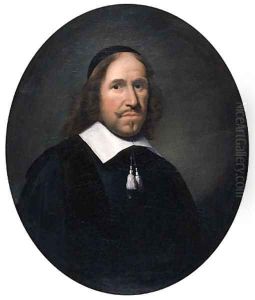Ludolph De Jongh Paintings
Ludolph de Jongh was a Dutch Golden Age painter, known for his genre scenes, portraits, and history paintings. Born in 1616 in Overschie (now part of Rotterdam), he was active during a period of great wealth and cultural achievement in the Netherlands, which was then known as the Dutch Republic.
De Jongh's early life and training are not thoroughly documented, but it is believed that he was a pupil of Cornelis Saftleven in Rotterdam. He may also have been influenced by other prominent artists of the time, such as Pieter de Hooch and Frans Hals, given the stylistic similarities in his work to theirs. De Jongh's paintings often depict elegant company scenes, merry companies, and domestic interiors with a keen eye for detail and a palpable sense of narrative.
After establishing himself as a painter, de Jongh became a member of the Saint Luke's Guild in Rotterdam in 1642. The guild was an association of artists and craftsmen that often provided a network of support and collaboration. Throughout his career, Ludolph de Jongh was a successful artist who enjoyed the patronage of the Dutch elite, including the Prince of Orange.
Although much of de Jongh's work reflected the tastes and interests of the Dutch middle class, including their domestic lives and leisure activities, he was also capable of producing more formal portraits and history paintings. His portraits exhibit a certain psychological depth, capturing the character and status of his sitters.
De Jongh's artistry was part of the larger Dutch Golden Age painting tradition, which is characterized by its focus on realism, attention to light and shadow, and the depiction of everyday life. His work contributes to our understanding of the period's social customs and domestic environments.
Ludolph de Jongh's later years saw a decline in his production, and he passed away in 1679. While he may not be as widely recognized as some of his contemporaries, his works are valued for their contribution to the genre of genre painting and the portrayal of 17th-century Dutch society. Today, de Jongh's paintings can be found in various art museums and private collections, offering a window into the world of the Dutch Golden Age.
